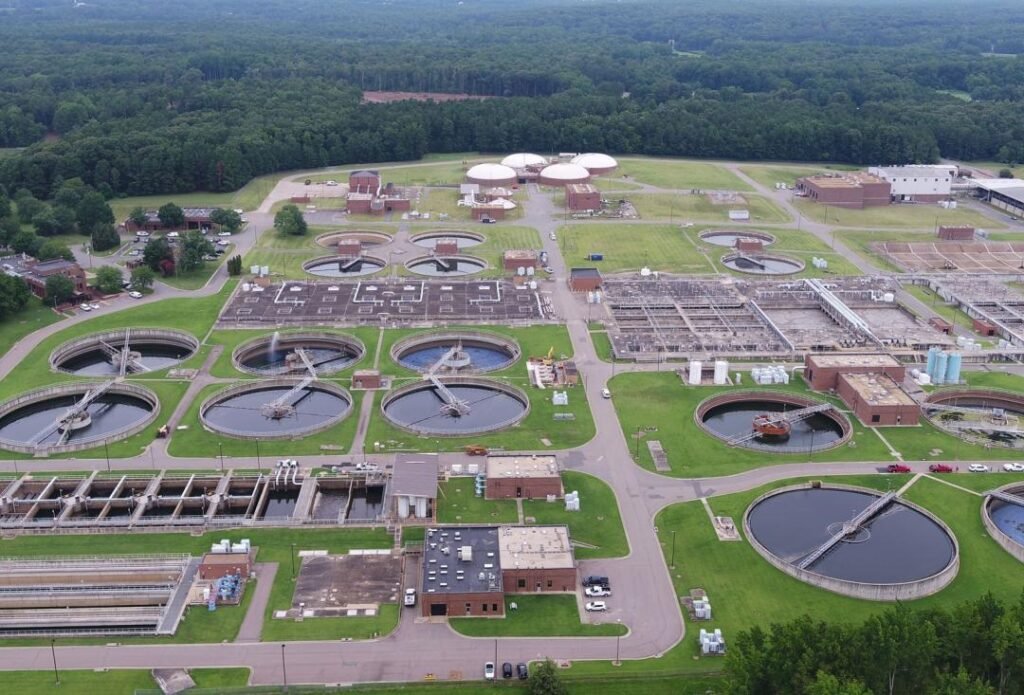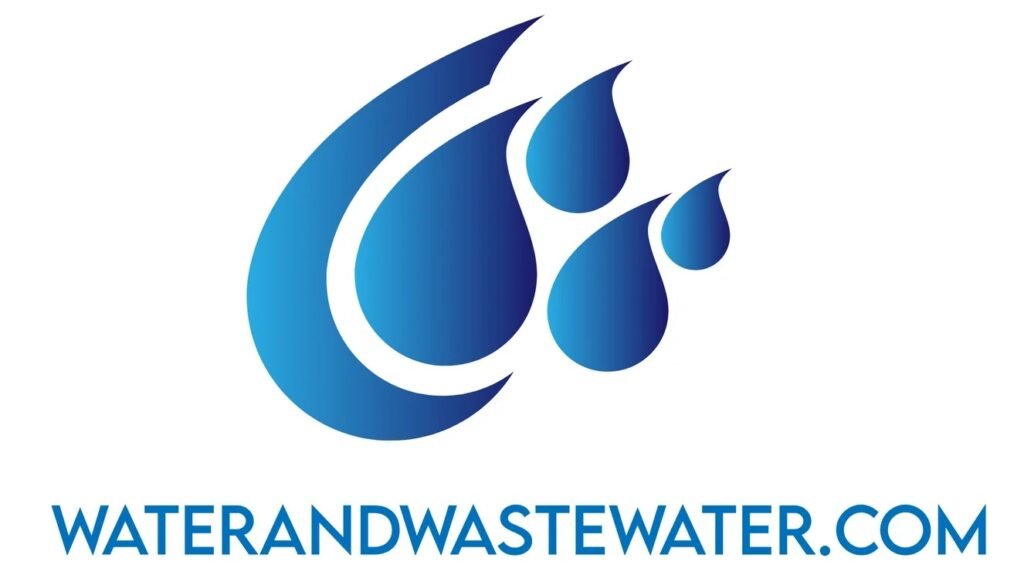Lower Potomac Wastewater Treatment Plant

The Lower Potomac Wastewater Treatment Plant: A Vital Resource for a Growing Community
The Lower Potomac Wastewater Treatment Plant (LPWWTP) stands as a critical infrastructure component for the communities it serves, providing essential wastewater treatment services for a growing and dynamic population. Situated in southern Fairfax County, Virginia, near the scenic Potomac River, this plant addresses the sanitation needs of numerous residents and plays a pivotal role in maintaining environmental quality. This article delves into the various aspects of LPWWTP, including its population served, treatment capacity, recent local news, key projects, community engagement, and its significance to the region.
Population Served and Wastewater Volume
The Lower Potomac Wastewater Treatment Plant serves a diverse and expanding population, comprising households, commercial establishments, and industrial facilitieis across various jurisdictions. The plant is designed to cater to approximately 375,000 residents. This figure reflects not only the permanent residents but also accounts for the transient population, including commuting workers and visitors, who contribute to the overall wastewater volume.
The volume of wastewater handled by LPWWTP varies with population dynamics, seasonal changes, and economic activities. On average, the plant manages around 31 million gallons of wastewater per day (MGD). However, it has seen fluctuations: peak flows can surpass 40 MGD during periods of high precipitation due to inflow and infiltration into the sewer system. Conversely, during drier periods, flow rates might dip slightly, but regular household activities and commercial processes still contribute a significant volume.
Treatment Capacity
To meet the demands of its large service area, LPWWTP boasts a substantial treatment capacity. The facility’s current design capacity stands at 54 MGD, providing ample margin to handle peak loads and future population growth. This robust capacity ensures the plant can effectively treat incoming wastewater, safeguarding public health and environmental integrity.
The treatment process at LPWWTP is both advanced and comprehensive, encompassing primary, secondary, and tertiary treatment stages. Primary treatment involves screening and sedimentation to remove large debris and settleable solids. Secondary treatment employs biological processes to break down organic matter, primarily through activated sludge or trickling filters. Tertiary treatment, the final stage, includes advanced filtration and disinfection, often involving ultraviolet (UV) light or chlorination, to ensure the effluent meets stringent water quality standards before being released into the Potomac River.
Recent Local News and Developments
The Lower Potomac Wastewater Treatment Plant has been in the news recently due to several notable developments. One of the significant stories involves the plant’s efforts to upgrade its infrastructure to enhance treatment efficiency and environmental compliance. In 2022, the plant initiated a substantial upgrade project focused on replacing aging equipment, improving energy efficiency, and meeting future regulatory requirements.
The upgrade project, known as the Nutrient Reduction Initiative, is particularly crucial in addressing the Chesapeake Bay Watershed’s stringent nutrient limits. The project aims to significantly reduce nitrogen and phosphorus levels in the effluent, key contributors to nutrient pollution in the bay. This initiative aligns with the broader regional efforts under the Chesapeake Bay Program, a partnership among states, federal agencies, and local jurisdictions to restore water quality in the bay.
In addition to nutrient reduction, the plant has been working on increasing its resilience to climate change impacts. This includes enhancing flood protection measures and implementing green infrastructure solutions such as constructed wetlands and bioswales to manage stormwater more effectively. These efforts are vital in addressing the challenges posed by severe weather events and rising sea levels.
Key Projects
LPWWTP has several key projects under its belt, reflecting its commitment to modernization, sustainability, and regulatory compliance. Apart from the Nutrient Reduction Initiative, other significant projects include:
-
- Energy Recovery and Renewable Energy Integration: LPWWTP has been exploring opportunities to recover energy from wastewater treatment processes. Anaerobic digestion, a biological process that produces biogas, is being harnessed to generate renewable energy. The plant has installed combined heat and power (CHP) systems that utilize biogas to produce electricity and heat, reducing reliance on external energy sources and lowering greenhouse gas emissions.
- Energy Recovery and Renewable Energy Integration: LPWWTP has been exploring opportunities to recover energy from wastewater treatment processes. Anaerobic digestion, a biological process that produces biogas, is being harnessed to generate renewable energy. The plant has installed combined heat and power (CHP) systems that utilize biogas to produce electricity and heat, reducing reliance on external energy sources and lowering greenhouse gas emissions.
-
- Advanced Treatment Technologies: The plant is continuously evaluating and implementing cutting-edge treatment technologies to improve efficiency and effluent quality. Membrane bioreactors (MBRs) and enhanced nutrient removal systems are among the advanced methods being integrated into the treatment process. These technologies not only enhance the plant’s performance but also provide a higher level of treatment, ensuring cleaner discharge into the Potomac River.
- Advanced Treatment Technologies: The plant is continuously evaluating and implementing cutting-edge treatment technologies to improve efficiency and effluent quality. Membrane bioreactors (MBRs) and enhanced nutrient removal systems are among the advanced methods being integrated into the treatment process. These technologies not only enhance the plant’s performance but also provide a higher level of treatment, ensuring cleaner discharge into the Potomac River.
-
- Infrastructure Renewal and Expansion: To accommodate future growth and maintain system reliability, LPWWTP is investing in infrastructure renewal and expansion projects. This includes upgrading existing treatment units, expanding capacity to handle increased flows, and rehabilitating aging sewer lines. These proactive measures ensure the plant can continue to provide reliable and high-quality service to the community.
- Infrastructure Renewal and Expansion: To accommodate future growth and maintain system reliability, LPWWTP is investing in infrastructure renewal and expansion projects. This includes upgrading existing treatment units, expanding capacity to handle increased flows, and rehabilitating aging sewer lines. These proactive measures ensure the plant can continue to provide reliable and high-quality service to the community.
-
- Odor Control Improvements: Recognizing the importance of maintaining good relations with neighboring communities, LPWWTP has implemented comprehensive odor control measures. This includes installing advanced odor scrubbers, covering open treatment tanks, and optimizing process controls to minimize odor emissions. These efforts have been well-received by the public and contribute to a more pleasant environment for nearby residents.
Community Engagement
Community engagement is a cornerstone of LPWWTP’s operations. The plant understands the importance of maintaining transparency, fostering trust, and involving the public in decision-making processes. Several initiatives highlight LPWWTP’s commitment to community engagement:
-
- Public Outreach and Education: LPWWTP hosts regular public tours, open houses, and educational programs to raise awareness about wastewater treatment and environmental stewardship. These events provide residents with firsthand insights into the treatment processes, the plant’s role in protecting water quality, and the efforts undertaken to meet regulatory standards. By educating the public, LPWWTP encourages responsible behavior and promotes a collaborative approach to environmental protection.
- Public Outreach and Education: LPWWTP hosts regular public tours, open houses, and educational programs to raise awareness about wastewater treatment and environmental stewardship. These events provide residents with firsthand insights into the treatment processes, the plant’s role in protecting water quality, and the efforts undertaken to meet regulatory standards. By educating the public, LPWWTP encourages responsible behavior and promotes a collaborative approach to environmental protection.
-
- Stakeholder Collaboration: The plant actively collaborates with local government agencies, environmental organizations, and community groups to address shared concerns and objectives. This includes participating in regional watershed management initiatives, partnering with schools for environmental education programs, and engaging with advocacy groups to improve water quality in the Potomac River and Chesapeake Bay.
- Stakeholder Collaboration: The plant actively collaborates with local government agencies, environmental organizations, and community groups to address shared concerns and objectives. This includes participating in regional watershed management initiatives, partnering with schools for environmental education programs, and engaging with advocacy groups to improve water quality in the Potomac River and Chesapeake Bay.
-
- Citizen Advisory Committees: LPWWTP has established citizen advisory committees comprising representatives from the community. These committees serve as a forum for residents to voice their concerns, provide input on key projects, and discuss operational issues. The plant values the feedback and perspectives offered by these committees, ensuring that community interests are considered in decision-making processes.
- Citizen Advisory Committees: LPWWTP has established citizen advisory committees comprising representatives from the community. These committees serve as a forum for residents to voice their concerns, provide input on key projects, and discuss operational issues. The plant values the feedback and perspectives offered by these committees, ensuring that community interests are considered in decision-making processes.
-
- Community Investment: Beyond its operational responsibilities, LPWWTP actively invests in community well-being. This includes supporting local environmental initiatives, sponsoring events, and providing resources for clean-up activities along the Potomac River. These investments demonstrate the plant’s dedication to being a responsible corporate citizen and contributing positively to the community it serves.
Conclusion
The Lower Potomac Wastewater Treatment Plant is a vital asset for the region, ensuring the safe and efficient treatment of wastewater while safeguarding the environment. Serving a substantial population, the plant’s significant treatment capacity and advanced technologies underscore its commitment to public health and environmental stewardship. Recent developments, such as the Nutrient Reduction Initiative and energy recovery projects, highlight the plant’s proactive approach to modernization and sustainability.
LPWWTP’s key projects and community engagement efforts reflect its dedication to transparency, collaboration, and community well-being. By investing in infrastructure renewal, advanced treatment technologies, and environmental education, the plant is well-positioned to meet current and future challenges. As the community grows and evolves, the Lower Potomac Wastewater Treatment Plant will continue to play a pivotal role in ensuring a cleaner, healthier, and more sustainable environment for all.
